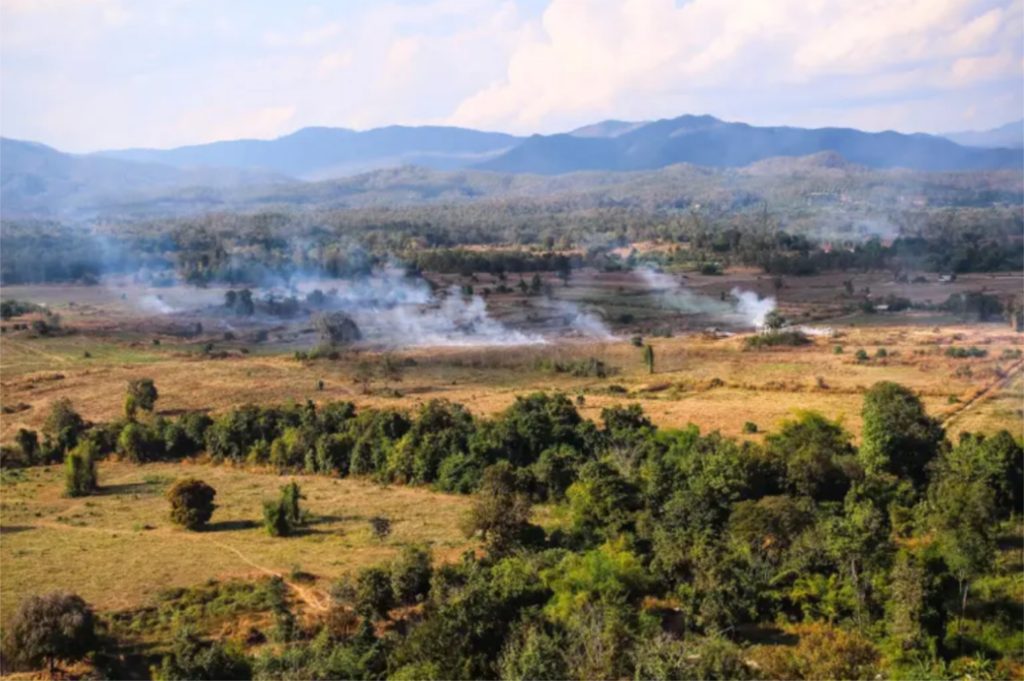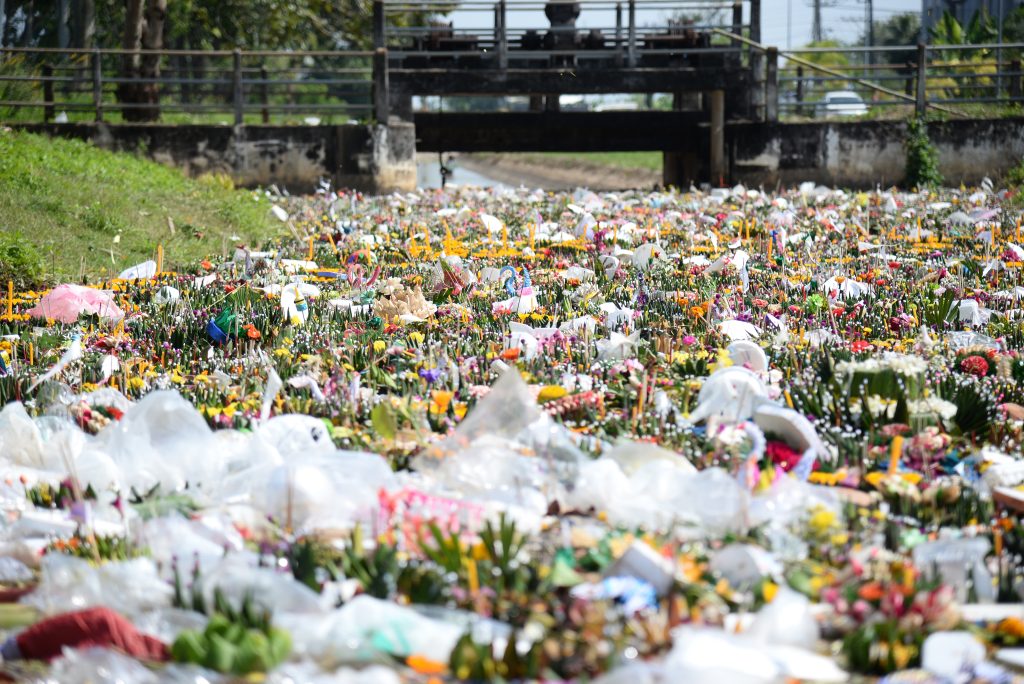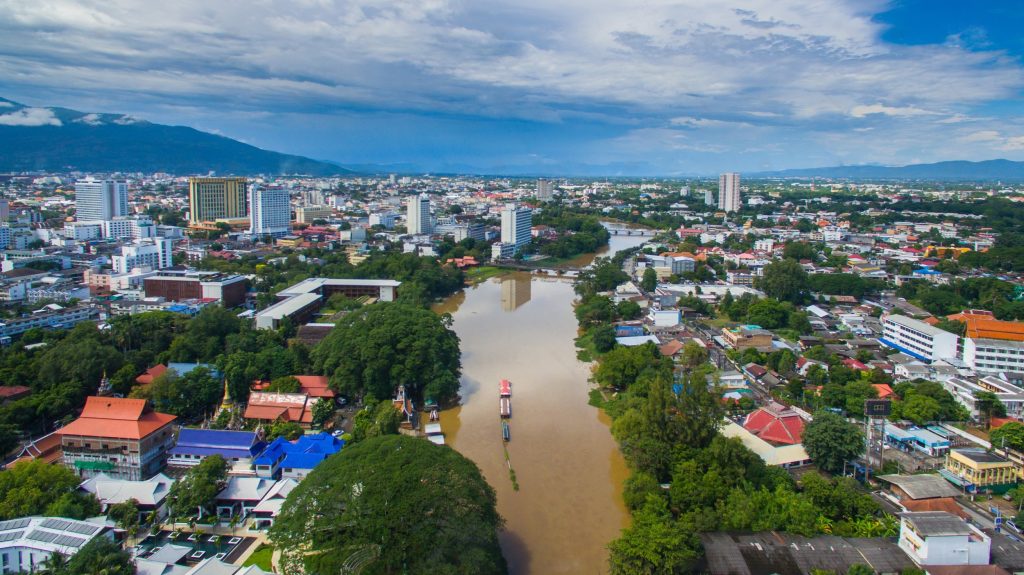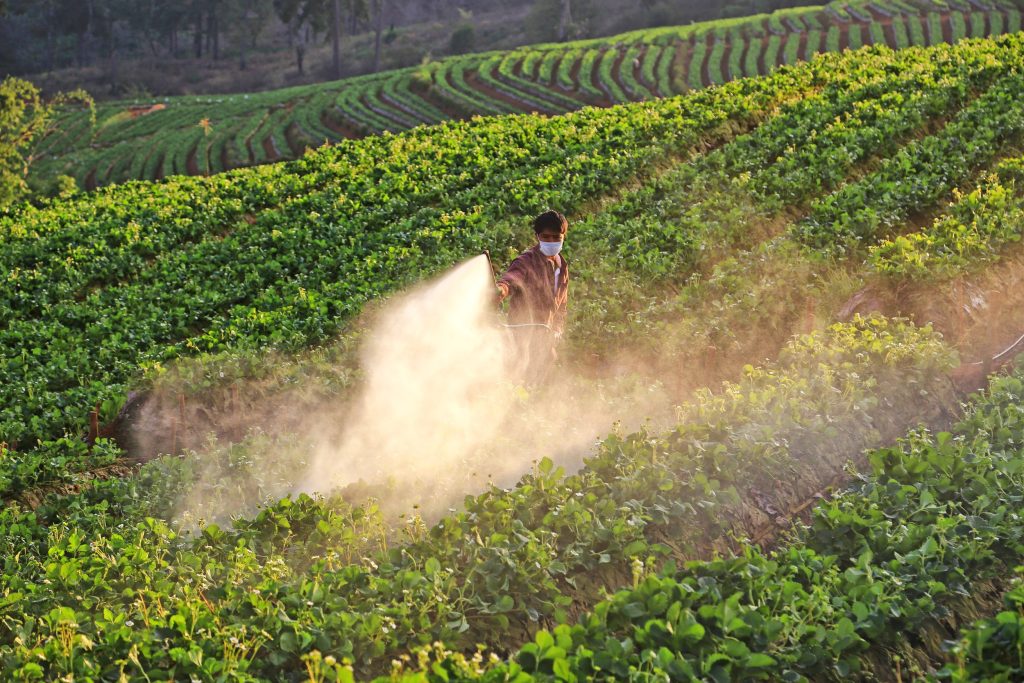Nature

Improving air quality urgently
Large scale fires contribute significantly to the smoke haze pollution affecting residents of Chiang Mai Municipality. They are caused by human activities, burning agricultural biomass (e.g. rice field), particularly during the dry season from November up to April. These fires affect and spread to surrounding National Parks and Forest Conservation Areas. Chiang Mai being surrounded by agricultural fields periodically suffocates in the resulting and toxic haze.
Cars are a major contributor to air pollution. The combustion of fossil fuels in car engines releases toxic pollutants such as carbon monoxide, nitrogen oxides, particulate matter, and volatile organic compounds into the atmosphere. They are commonly referred to as PM2.5 or PM10. The older the car, the worse the release of toxic pollutants. The sheer number of cars on the roads, especially in urban areas, exacerbates these pollution levels
The resulting air pollution poses a significant challenge to the environment itself and human health, in particular infants and elderly. Carbon dioxide, carbon monoxide, or nitrogen oxides are commonly called greenhouse gases land contribute to global warming and climate change. The pollutants from fires and cars degrading air quality contribute to respiratory diseases, cardiovascular problems, and even premature death.
Chiang Mai often received the distinction of being among the cities with the world’s worst air quality. In recent years, some areas of Chiang Mai have hit levels of PM2.5, of up to 592 micrograms per cubic meter (ug/m3) of air, almost 12 times above levels considered safe to breathe by the World Health Organization (WHO). This is also the same period when tourism is at its high season in Chiang Mai, negatively impacting on attracting tourists and possible income earned by local residents.
For Chiang Mai it should be imperative to seek cleaner transportation alternatives and adopt sustainable agricultural practices not only to mitigate the environmental and health impacts but also for economic benefits resulting from transformative urban practices.

Stopping the plastic flood
Uncontrolled urban expansion and local economy been driven by cheap packaging have choked the Ping River and Mae Kha Canal with plastic waste. Littering and storm runoff carry plastic from the city, polluting the waterways and ultimately contributing to Thailand’s status as the world’s sixth-largest ocean polluter. Including the Ang Kaew reservoir has not been spared. Contamination from various sources has led to fish kills, foul odors, and unsightly algae blooms.
These once vibrant waterways, central to Chiang Mai’s cultural and recreational life, are now overshadowed by pollution. The polluted state of the Ping River, Mae Kha Canal, and Ang Kaew reservoir threatens both human and environmental health, jeopardizing Chiang Mai’s reputation as Thailand’s “Northern Rose.”

Restoring surface water quality
Chiang Mai’s key water bodies—the Ping River, Mae Kha Canal, and Ang Kaew Reservoir—are vital for the city’s sustainability. The Ping River, deeply rooted in Chiang Mai’s cultural heritage since the Lanna Kingdom’s founding in 1236, faces threats from agriculture, urban pollution, and climate change. Mae Kha Canal is another crucial element of the city’s water system.
Unregulated urban growth has severely polluted both the Ping River and Mae Kha Canal with domestic waste and plastic, contributing to Thailand’s ranking as the sixth worst ocean polluter by the World Bank. The Ang Kaew Reservoir, a scenic spot on the CMU campus, also suffers from pollution, resulting in fish deaths, foul odors, and algae blooms. The deteriorating water quality poses health risks and tarnishes Chiang Mai’s image as the “Northern Rose” of Thailand, evoking nostalgia for the city’s once-pristine waters.

Returning trees and green spaces
Tree cover, or canopy cover, is vital for city and its citizens for several reasons. Trees help mitigate the urban heat effect by providing shade and evaporative cooling, thereby reducing energy consumption for air conditioning and lowering temperatures in densely built-up areas. In other words, they provide an economic benefit for everyone. But most importantly, they act as natural air filters, removing pollutants and improving air quality. Furthermore, trees help manage stormwater runoff, reduce soil erosion, and mitigate flood risks by absorbing and retaining water. In a tropical climate with heavy rainfall in short time, tree cover plays a crucial role in maintain ground stability and absorbing rain water.
The World Health Organization (WHO) guidelines advocate for a minimum of nine square meters of green space per person in urban areas. Chiang Mai Municipality faces an ongoing challenge of dwindling public green spaces. This decline is attributable to unchecked urban development, notably the construction of large condominium and commercial buildings across the city, often without adequate consideration for the wellbeing of residents and nature.
Along the loss of trees, green spaces have also been vanishing over the years due to the expansion of urbanization, paving concrete over natural areas. Urban trees and green spaces with park benches are crucial for Chiang Mai city’s sustainability. From parks and gardens to natural areas and green infrastructure, green spaces with seating, in particular with large trees, further contribute to mitigating the urban heat island effect by lowering temperatures and enhancing air quality through pollutant filtration.
Trees and green spaces in the city promote biodiversity conservation, creating habitats for diverse flora and fauna within urban landscapes by providing habitats for various small animals, counter unwanted pestilence and vermin, and support an ecological balance in the urban environments. They also serve as recreational areas for residents as they encourage physical activity and influence mental wellbeing. Economically, green spaces enhance property values, attract tourism, and support local businesses.

Putting away chemical agriculture
Historically, humans thrived on nutrient-dense organic food. With the industrial revolution, however, agriculture relying on harmful chemicals such as fertilizers, pesticides, and herbicides has dominated food production. These practices damage biodiversity, contaminate soil and water, and pose serious health risks in consequence from consuming contaminated food.
A shift from chemical-intensive farming to regenerative ecological farming is creating attention worldwide, which works harmoniously with nature and supports local food economies, and embracing natural cultivation methods. Thailand as whole relies heavily on agricultural products for local community consumption and exports.
Chiang Mai’s fertile land and favorable climate are key strengths. Recently, there has been a rise in organic farms and educational permaculture sites, inspired by the late King’s sufficiency economy model. Chiang Mai is developing its organic food supply for local markets and promoting itself as a wellness hub in Thailand and Southeast Asia. This strategic focus on organic farming strengthens the local economy and provides resilience against a declining tourism sector. However, many farmers still grow monoculture cash crops like corn using toxic chemicals, which are costly and harmful to both human health and the environment.
